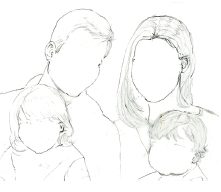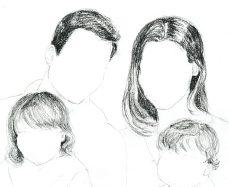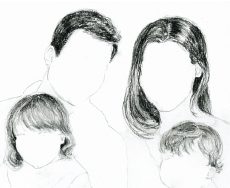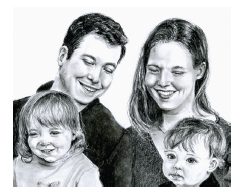Hair is generally more coarse in adults, finer and softer for children and babies.
When you’re drawing a family portrait, it’s important to be able to realistically show a difference …
… because often times a wide age range is represented in the family.
- No matter whose hair you’re drawing, begin with some lines that clarify the shape of the head, the outer shape of the hairstyle, and some of the interior lines.You should have a clear idea of where the hair parts, how it falls around the face, where it ends and how far out it extends as well as where the highlights and large shadow shapes are.
Indent a few highlight hairs by pressing into the white paper with a blunt stylus or a sharp graphite pencil over a piece of tracing paper. These will remain white even after going over the top with heavy charcoal.
- Build up tone in the hair using charcoal pencil. Work lightly; you’re not drawing individual strands of hair so much as getting tone on the hair in the shapes of shadows and avoiding the highlights.For young kids and babies, do most of this work with soft graphite, which has a finer texture than charcoal.
- Blend over the body of the hair with a tortillon. In adults, blend less, letting more of the coarse texture remain. In children and babies, blend the tone more.
- Go back into the body of the hair and emphasize dark strands with the charcoal or graphite (charcoal for adults, graphite for children).Pull out highlights with a kneaded eraser and make some flyaway hairs on the outside of the of the hair and around the face.
Learn how to draw portraits like a master with our latest portrait mastery drawing course.
It’s just like having your own drawing teacher guide you step-by-step along the way without the expensive price tag.
No more smudgy mess with black and white that looks like a first grader whipped up in art class.
“Portrait Mastery” is generously illustrated showing you step-by-step just how to create a real life portrait.

